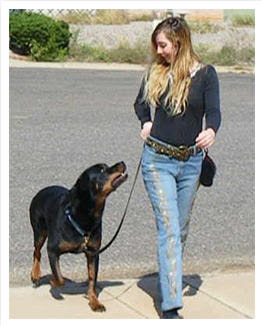Welcome to my blog how to leash train a puppy!
Leash training is an important part of a puppy's overall training and socialization process, as it helps them learn how to behave on a leash and interact with the world around them.
In this pots, we will cover the steps you can take to effectively leash train your puppy and help them become a well-behaved and well-socialized member of the family.
We'll discuss the tools you'll need, how to introduce your puppy to the leash, and how to gradually increase the difficulty of the training as your puppy becomes more comfortable on the leash.
Whether you're a first-time puppy owner or an experienced dog trainer, we hope this post will provide you with the knowledge and guidance you need to leash train your puppy successfully.
Training your dog to wear a collar and leash is an important step in their development as a well-behaved pet. Not only is it necessary for safely walking and exercising your dog, but it is also a key component of obedience training.
Here are some tips for getting your dog used to a collar and leash:
Introduce the collar and leash gradually: Begin by simply showing your dog the collar and leash and allowing them to sniff and explore it. Then, try putting the collar on your dog for short periods of time while they are relaxed and not paying much attention to it. Gradually increase the amount of time that your dog wears the collar until they are comfortable with it.
Use treats and positive reinforcement: Whenever your dog responds well to the collar and leash, be sure to praise them and give them a treat. This will help to associate the collar and leash with positive experiences and encourage good behavior.
Have short training sessions in familiar places: It's important to start training your dog to wear a collar and leash in familiar and low-stress environments. This will help to build their confidence and make the training process less intimidating.
Praise good behavior: As with any training, it's important to praise your dog for good behavior. Whenever your dog walks calmly on a leash or responds well to commands, be sure to let them know they are doing a good job. This will encourage them to continue to behave well and make the training process more enjoyable for both you and your dog.
Keep a short leash: It's important to keep a short leash when walking your dog, especially when you are first starting out. This will give you more control over your dog and prevent them from getting too far ahead or wandering off.
Keep him at your side: It's also important to keep your dog at your side while walking. This will help to prevent them from getting into trouble or getting lost, and it will also make the walk more enjoyable for both you and your dog.
Give him time to do his business: Make sure to allow your dog plenty of time to do their business on the walk. This will help to prevent accidents in the house and keep your dog healthy and happy.
Find a pace: It's important to find a pace that is comfortable for both you and your dog. If your dog is very energetic, you may need to go for longer or more frequent walks to help them burn off energy. On the other hand, if your dog is older or less energetic, shorter and slower walks may be more suitable.
If you want to learn more about training your dog to wear a collar and leash or successful leash walking, I recommend checking out some of the other content that I have shared. I have covered a wide range of topics related to dog training and behavior, and I'm sure you will find something that is both informative and helpful.
One article that I would especially recommend is "Traintraining For Dogs ". In this post, I provide practical advice for making your leash walks enjoyable and stress-free for both you and your dog. I cover topics such as keeping a short leash, maintaining control over your dog, and finding a pace that is comfortable for both of you.

